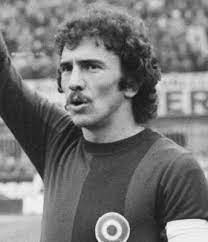Frankie Yale - gang boss
Mobster who employed a young Al Capone
The gang boss who gave Al Capone one of his first jobs was born on this day in 1893 in Longobucco in Calabria. Francesco Ioele, who would later become known as Frankie Yale, moved to the United States in around 1900, his family settling into the lower Manhattan area of New York City. Growing up, Ioele was befriended by another southern Italian immigrant, John Torrio, who introduced him to the Five Points Gang, which was one of the most dominant street gangs in New York in the early part of the 20th century. In time, Ioele graduated from petty street crime and violent gang fights to racketeering, changing his name to Yale to make him sound more American and taking control of the ice delivery trade in Brooklyn. With the profits Yale opened a waterfront bar on Coney Island, which was called the Harvard Inn. It was there that he took on a young Capone as a bouncer and in a fight there that Capone acquired the facial scars that would stay with him for life. Capone worked for Yale for two years until Torrio, by then based in Chicago, recruited him to his organisation, and Capone moved to the city with which his criminal activities would become associated. Read more…
__________________________________________________________
Carlo Orelli – soldier
The last trench infantryman
Carlo Orelli, the last surviving Italian soldier to have served at the start of Italy's involvement in the First World War, died on this day in 2005 at the age of 110. Orelli had signed up for active duty at the age of 21 and joined the Austro-Hungarian front after Italy joined the war on the side of Britain, France and Russia in May 1915. He took part in combat operations near Trieste, experiencing the brutality of trench warfare and seeing many of his friends die violent deaths, but after receiving injuries to his leg and ear he spent the rest of the war in hospital. Orelli was born in Perugia in 1894, but his family moved to Rome, where he was to spend most of the rest of his life living in the Garbatella district. He came from a military background and had a grandfather who had helped to defend Perugia against Austrian mercenaries in 1849. His father had served in the Italian Abyssinian campaign in the 1880s and his elder brother had fought in Libya during the war between Italy and Turkey in 1911. The wounds Orelli suffered during a confrontation with Austrian soldiers ended his military career and he spent the rest of the war recovering from an infection in hospital. Read more…
_________________________________________________________
Papal Swiss Guard
Colourful uniforms camouflage highly trained security professionals
The Pope’s Swiss Guard was founded on this day in Vatican City in 1506. A contingent of guards from Switzerland has continued to guard the Pope from that day to present times and it is one of the oldest military units still in existence. The Swiss had been producing mercenary soldiers for hundreds of years with a reputation for loyalty and good discipline. In the 15th century they were known for their good battle tactics and were employed by many European armies. Pope Julius II ordered the first Swiss troops to guard the Vatican and they arrived in Rome on 22 January, 1506, the official date now given for the foundation of the Papal Swiss Guard. The Pope later gave them the title ‘Defenders of the Church’s freedom’. Recruits to the Pope’s Swiss Guard unit have to be Catholic men of Swiss nationality who have completed military training and can produce evidence of their good conduct. Since the attempted assassination of Pope John Paul II in 1981, the Guards have received training in unarmed combat and in the use of modern weapons. They are a colourful sight on ceremonial occasions at the Vatican in their blue, red, orange and yellow uniforms of Renaissance design. Read more…
________________________________________________________
Antonio Todde - supercentenarian
Sardinian shepherd holds record as oldest Italian in history
Antonio Todde, who was the oldest living man in the world before he died at the age of 112 years 346 days in 2002 and remains the oldest Italian man in history, was born on this day in 1889 in Tiana, a mountain village in Sardinia. There are 19 other Italians who have attained a higher age, but all are women. Maria Giuseppa Robucci, from Apulia, is still living at the age of 115 years 307 days but would need to survive a further year and 195 days to match Emma Morano, from Piedmont, who died in 2017 aged 117 years 137 days as the oldest Italian of all time. Todde was the world’s most senior male centenarian from the death of the American John Painter on March 1, 2001 until his own death 10 months later. He was born to a poor shepherd family in Tiana, about 140km (87 miles) north of Cagliari in the Gennargentu mountains, about 55km (34 miles) southwest of the provincial capital, Nuoro. The area historically has a high number of centenarians and there was longevity in Todde’s family. His father Francesco lived to be 90 years old, and his mother Francesca 98. His sister Maria Agostina - one of 11 siblings - was still alive at the age of 97 at the time of his death and herself lived to be 102. Read more…


















